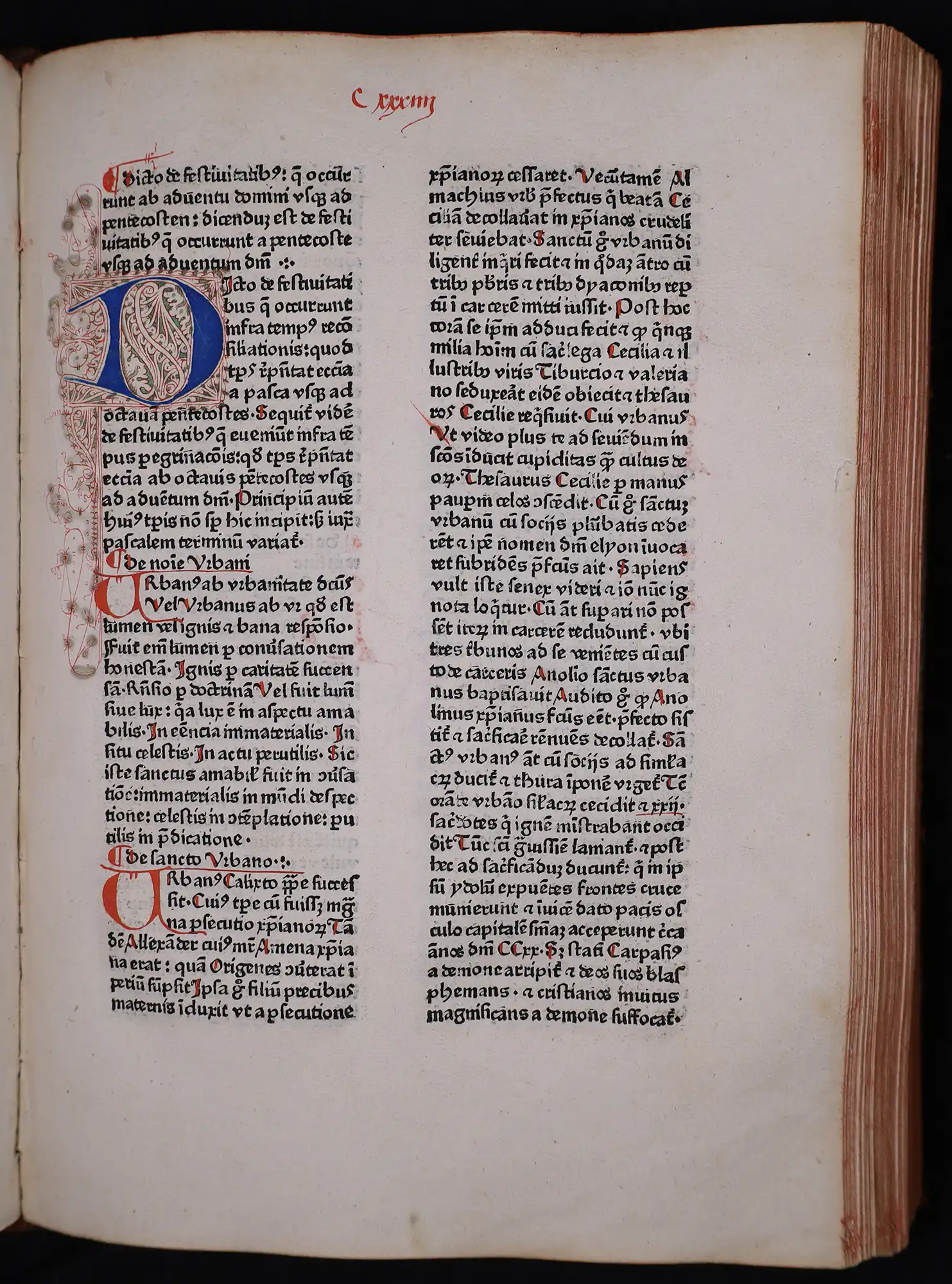
Jacobus de Voragine. Legenda aurea. Cologne: Conrad Winters de Homborch, 1476.
From the mid-1460s, the populous town of Cologne became for some decades the centre of north-west German printing. Before famously establishing his press at Westminster in 1476, the English printer William Caxton made an 18-month sojourn to Cologne to observe its printing trade in 1471-72.
The press of Conrad Winters de Homborch flourished between ca. 1475 and 1482, and the 1476 folio displayed here was one of his earliest productions.
The Legenda aurea sanctorum (Golden Legend of the Saints) of Dominican friar and historian Jacobus de Voragine (ca. 1230–1298) was written between 1260 and 1275. It is a compilation of the traditional lore of all the saints venerated in the thirteenth century, forming a layman’s lectionary. The work is divided into five sections based on the ecclesiastical year from Advent to Pentecost.